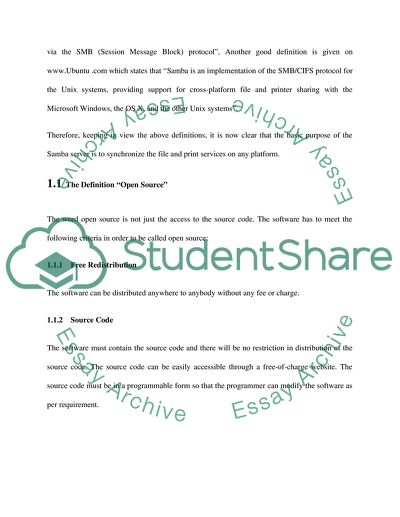Cite this document
(Samba Server Analysis Case Study Example | Topics and Well Written Essays - 2384 words, n.d.)
Samba Server Analysis Case Study Example | Topics and Well Written Essays - 2384 words. Retrieved from https://studentshare.org/information-technology/1565057-report-discussing-from-an-administration-and-security-perspective-the-role-and-function-of-samba-within-a-unix-network
Samba Server Analysis Case Study Example | Topics and Well Written Essays - 2384 words. Retrieved from https://studentshare.org/information-technology/1565057-report-discussing-from-an-administration-and-security-perspective-the-role-and-function-of-samba-within-a-unix-network
(Samba Server Analysis Case Study Example | Topics and Well Written Essays - 2384 Words)
Samba Server Analysis Case Study Example | Topics and Well Written Essays - 2384 Words. https://studentshare.org/information-technology/1565057-report-discussing-from-an-administration-and-security-perspective-the-role-and-function-of-samba-within-a-unix-network.
Samba Server Analysis Case Study Example | Topics and Well Written Essays - 2384 Words. https://studentshare.org/information-technology/1565057-report-discussing-from-an-administration-and-security-perspective-the-role-and-function-of-samba-within-a-unix-network.
“Samba Server Analysis Case Study Example | Topics and Well Written Essays - 2384 Words”, n.d. https://studentshare.org/information-technology/1565057-report-discussing-from-an-administration-and-security-perspective-the-role-and-function-of-samba-within-a-unix-network.


